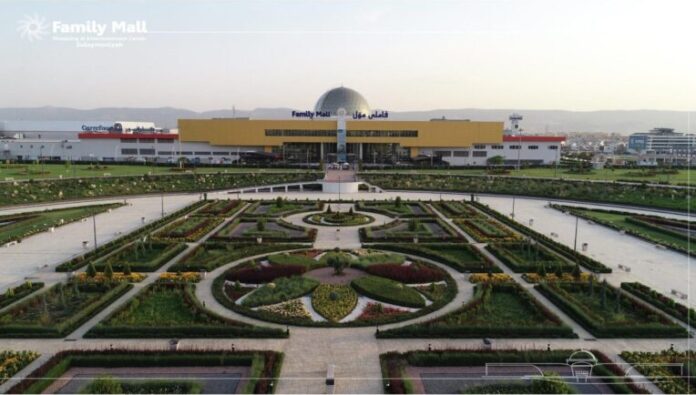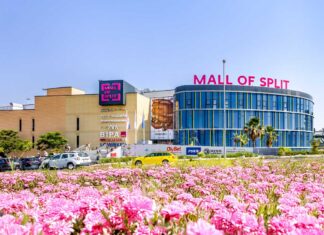MallMark is one of the largest Turkish commercial and retail real estate companies. We spoke with Aytaç Özçiçek, CEO of MallMark, to share his views on how the pandemic is transforming shopping centers.

Mallmark Real Estate, founded by Aytaç Özçiçek, is one of the largest commercial and retail real estate companies from Turkey. The company provides services in the fields of shopping mall management, leasing, project and concept development, asset management, and finance management in Turkey, Iraq, Iran, and Uzbekistan.
How are your malls tackling the challenges of the pandemic and what strategies are you now implementing to drive in visitors and to support tenants?
Due to the lockdowns, the pandemic has of course affected the shopping behavior of our visitors. During the first wave, consumers had fewer reasons to purchase non-essential goods, such as clothing, as they were fewer occasions to go out. Visitors mainly focused on buying essential goods to survive.
The decreasing visitor numbers in our shopping centers resulted in tenant dissatisfaction, so we decided to support them by giving them a 40% discount on their rents to help them stay open.
During this time we also focused on making interior changes to improve the shopping experience within our malls and to surprise them with a brand new concept.

Have you had any new store openings within your malls and do you have any future openings planned?
We still have new players in the retail sector who aim to expand their business and aim to increase their store numbers in places where old players find it risky to open. We continued to lease out units to new retailers. Shopping malls are still giving a good opportunity to retailers who want to be successful. By the end of the year, we are opening a new shopping center which we have already leased out.
What retail categories are now performing the best in your malls and why?
Now as the restrictions have been loosened, restaurants are performing pretty well, as people have become eager to socialize with their friends and taste good food within our cozy gastronomy units. Fashion stores are also performing better, as wedding ceremonies and other social events are now allowed.
On the other hand, cinemas are not performing well. During the pandemic, filmmakers were more focused on producing TV shows, Netflix, rather than films for cinemas, so the offer of new movies is now not very exciting.
In your opinion, how has the pandemic affected the retail market, consumer behavior, and shopping centers? What changes do shopping centers now need to make in order to stay ahead?
The pandemic increased the consumer’s conversion to online shopping and e-commerce. The e-commerce share doubled during the pandemic and retailers are now trying to discover new online ways to reach consumers.
However, premium brands know that visual design is a driving factor for increasing their sales. For instance, a consumer is more likely to buy a t-shirt online from H&M but less likely when it comes to purchasing a more expensive item from a premium brand such as Armani.
Shopping centers should create new ways to attract visitors. They should increase entertainment areas and host interesting events such as sports competitions, social gatherings, food tasting workshops, etc.

Since the beginning of the pandemic, what forms of marketing do you use?
First and foremost, we have made sure to secure all required hygienic measures within our malls, to make the shopping experience safe for our visitors.
Also, we have benefited a lot from a varied mix of marketing campaigns. Social media management, public relations, and retail exhibitions shows are all part of our promotions.
We have collaborated with influencers to participate in our marketing campaigns and invited many opinion leaders, presidents of associations, and student societies. We also rewarded our buyers and organized many special activities to establish visitor loyalty.
What is next for your malls/company?
The supply of modern shopping center retail space per capita is very high in some countries such as England, Turkey, Russia, and Poland. However, this level is quite low in some countries and this is why we focus on untouched markets in Central Asia and the Balkans.
Two months ago, we opened the first and only shopping center in Andijon town in Uzbekistan. Andijon has a population of 750.000 and people living there were very enthusiastic about our new Navruz Mall. Navruz Mall has become their main shopping, entertainment, and leisure destination.
Our aim is to discover untouched markets where the purchasing power of people is good and we strive to build new shopping malls for the next generation.
How do you see the future of retail?
The need for socializing will never be eradicated. But of course, future consumers will not want to buy goods in huge traditional shopping center buildings.
We need to be innovative and build cozy shopping malls with plenty of fresh air and open street concepts. Restaurant numbers will increase and fashion stores will decrease. Plus, some floors of existing shopping malls will be converted into logistics centers. Entertainment areas will be very important within shopping malls.
Shopping malls will be designed as experience centers in the future. This is why we believe that retail real estate investors should be agile and dynamic to make these functional changes in order to create a sustainable and profitable future for their shopping malls.









